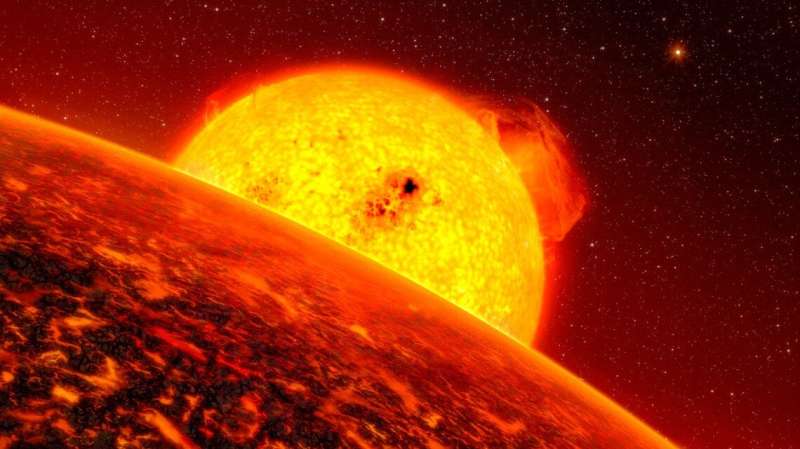Scientists have modeled the composition of lava on volcanic exoplanets depending on the metallicity of their stars. They made samples of the molten compositions in the laboratory and tested how they would look for the spectrograph of the James Webb Telescope.

What do volcanic exoplanets look like?
Scientists know what volcanic activity looks like on different planets of the Solar system. However, in other stars, worlds, especially newly formed ones, may be completely unlike either Earth, Mars, or Io.
A group of representatives of different sciences from Cornell University modeled lava, which can be found on exoplanets. They published this study in Monthly Notices of the Royal Astronomical Society.
The initial data for the research were data on stars around which the existence of exoplanets was confirmed. The content of elements heavier than hydrogen can be very different from that of the Sun. In addition, depending on the distance to the sun, various compositions can be formed from these substances.
Lava in the laboratory
Based on all these considerations, the researchers modeled not one, but as many as 16 types of lava that can form on different exoplanets. Then, according to the calculated compositions, samples were made in a laboratory furnace. After they cooled down, the scientists applied spectroscopic equipment to them to find out how they would look in the infrared region of the spectrum.
The researchers plan to use the resulting catalog of infrared spectra in the future when working with the James Webb Space Telescope. One of its main tasks is spectroscopic studies of exoplanets to identify signs of life on them.
However, scientists are convinced that the study of planets covered by lava may also make sense. After all, some of them should very much resemble the Earth a few million years after formation. So, such research will be a window into our own past.
According to phys.org
Follow us on Twitter to get the most interesting space news in time
https://twitter.com/ust_magazine

